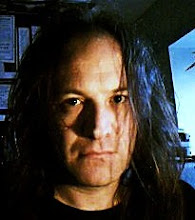from [click here]
The electric bass guitar was a brilliant invention, but its acceptance came slowly. Although Monk Montgomery and a few other pioneers latched onto the early Fenders immediately, a decade went by before the instrument's first virtuoso, Motown sideman James Jamerson, gave it legitimacy and respectability. Inspired by Jamerson's brilliant-and uncredited-work, such stylists as Paul McCartney, John Entwistle, Jack Bruce, and Larry Graham brought the instrument center-stage in the late '60s.Over the past two decades, appreciation of the instrument's possibilities has elevated such modern masters as Jaco Pastorius, Stanley Clarke, Jeff Berlin, and Billy Sheehan to celebrity status. And yet, one of the most innovative and important bassists of our time has-like Jamerson-functioned primarily as a sideman, and he remains largely unknown to contemporary audiences. His name is Anthony Jackson.Driven purely by an unshakeable love for, and dedication to, music, Jackson has consistently broken down musical barriers. His mastery of various pick and fingerstyle techniques and startling ability to restructure instantly the melodic, harmonic, and rhythmic direction of a piece of music mark him as an innovator of the highest order. Jackson has also conducted exhaustive research into the instrument's design and sonic reproduction, and his idea for a "contrabass guitar" predated the current boom in extended-range basses by nearly 20 years. Most important, as an artist, his refusal to compromise his integrity for popular trends has enabled him to retain his individuality in all musical situations.Anthony Jackson was born on June 23, 1952, in New York City, approximately one year after the introduction of the Fender bass. By age 12, his voracious listening habits, combined with a few years of "poking" at the piano, evolved into a desire to play the guitar. He started out on a standard 6-string but soon began to play bass guitar as well. By the time he was 16, he had moved to bass full-time, drawing from a diverse collection of musical mentors, chief among them James Jamerson, Jack Casady (of the Jefferson Airplane), and French modernist composer Olivier Messiaen.Jackson began to perform locally in 1966 and played on his first recording session in 1970. Two years later, he joined Billy Paul's band, receiving his first gold record for the hit "Me And Mrs. Jones." As a result, he started working regularly with the Philadelphia production team of Gamble and Huff. In 1973, he earned a writer's credit as well as an immediate reputation for his unforgettable bass line on the O'Jays' hit "For The Love Of Money." Shortly after, an informal demo session in New York for arranger Leon Pendarvis led to a session with pianist/singer Roberta Flack, and word of Jackson's sophisticated style spread quickly through the Big Apple's studio scene.A 13-month stint with Buddy Rich's sextet at the drummer's East Side club gave Jackson additional exposure. He then toured with both Flack and violinist Michael Urbaniak before the demands of session work kept him in town. Always one to disdain categorization, he nevertheless became known as a "studio musician," despite his seminal work with fusion artists such as Chick Corea, Al Di Meola, and John Scofield. (He also received an offer to join Weather Report in 1975.)After moving to Los Angeles in 1977, Anthony worked on projects with Lee Ritenour, Dave Grusin, Tom Scott, and others. He returned to New York on the eve of what was to become a pivotal year, 1978. During the period that followed, he reached new technical and creative levels, resulting in some of the finest contemporary bass playing ever recorded, with such diverse artists as Chaka Khan (Naughty, What Cha' Gonna Do For Me), Steely Dan (Gaucho), Al Di Meola (Electric Rendezvous), Paul Simon (Greatest Hits, Etc.), Eyewitness (Modern Times), and Michel Camilo (In Trio).In 1975, Jackson "terrorized" luthier Carl Thompson into building his first contrabass guitar-a 6-string bass tuned (low to high) B, E, A, D, G, C -an idea he conceived while in his teens. Working with successive guitar makers to improve design and playability, he finally began playing the instrument exclusively in 1982.


4 Comments:
i have nicked this. turned it into white text so that people can actually read it and have posted it onto my music site with your good self credited as the author.
fascinating insight.
x
I'm not the author! Use link on post title to got to author!
...and hey, what's wrong with the classy blue text?!
only teasing! sorry about the mix up!
Post a Comment
<< Home